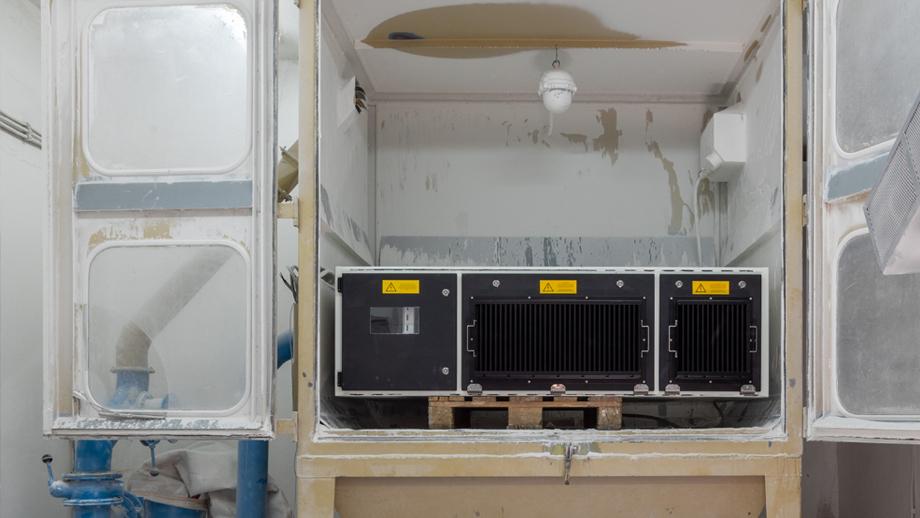Environmental impact testing
Environmental testing often comprises vibration and climatic assessments, as well as additional measurements like noise emission levels and human exposure to vibrations. Equipment intended for harsh environments, such as marine, railway, and power plant applications, frequently requires specialized testing.

Environmental testing services provided by our Laboratory Center include:
- Climatic tests
- Mechanical strength and vibration resistance testing of components and devices (sinusoidal, random, shock)
- IP and IK protection testing
- Corrosion resistance testing (salt mist)
- UV resistance tests
Our laboratory offers comprehensive vibration testing services, verifying the mechanical strength and durability of components to withstand specified vibration intensities (sinusoidal, random, shock). In addition to vibration testing, we provide:
- Declaration and verification of noise emission levels
- Determination of sound power levels of noise sources using sound intensity
- Determination of sound power levels of noise sources using sound pressure
- Climatic testing services include verification of several extreme conditions:
- Cold test
- Dry heat test
- Damp heat test
- Neutral salt spray test
- Water condensation test
IP and IK protection
Certain devices must provide IP and IK ratings to end-users, serving as essential guidelines for their proper application. Implementing the correct solutions for devices intended for outdoor use or extreme conditions is crucial. In our facilities, we conduct comprehensive tests for water and dust ingress, as well as mechanical impacts. These tests cover a wide range of applications and are performed in accordance with IEC 60529 and IEC 62262 standards.
Common applications requiring IP and IK testing include:
- Outdoor lighting devices
- Control systems (e.g., crossroads, railway applications, outdoor control systems)
- Parts of motors, generators, rotors, transformers
- Equipment exposed to dust or water ingress
- Maritime navigation and radiocommunication equipment (IEC EN 60945), adhering to standards such as DNV GL rules, Lloyd Register rules, Russian Maritime Register of Shipping rules, and RINA rules
IP (Ingress Protection) testing provides information about the level of protection against the ingress of solid objects and liquids. The IP rating consists of two numbers (IPxx). The first number indicates the level of protection against solid objects (0 – 6), while the second number denotes the level of protection against liquids (0 – 8).
Water Ingress Protection (IPX1 to IPX6):
- Water drops (vertical and at a 15º angle)
- Rain
- Water spray
- Water jet
- Strong water jet
Solid Object Ingress Protection (IP1X to IP6X):
- Objects with a diameter larger than 50 mm
- Objects or fingers with a diameter larger than 12.5 mm
- Objects with a diameter larger than 2.5 mm
- Objects with a diameter larger than 1.0 mm
- Dust
- Complete protection against dust
IK (Impact Protection) ratings provide information about the level of protection against mechanical impacts. The IK rating scale ranges from 01 to 10, depending on the impact energy.
Walk-in climate chamber

As one of the largest in Europe, our walk-in climate chamber offers a wide range of accredited testing methods in accordance with EN ISO/IEC 17025 standards.
Tests can be conducted on both loaded and unloaded equipment. Additionally, the chamber is equipped with an exhaust gas pipeline, allowing for the safe testing of devices powered by gasoline or diesel engines.